14 Real-World Customer Service Objectives for Business Excellence
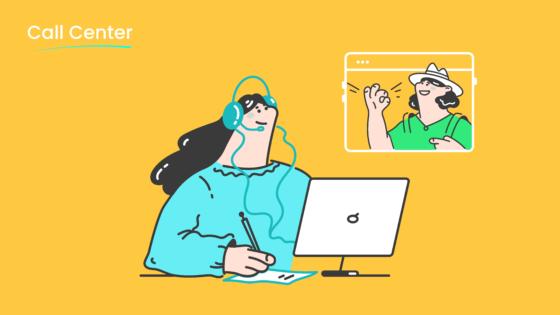
Customer service objectives set clear targets for your team. These customer service goals help you deliver effective customer service and drive business excellence. When you set the right objectives of customer service, you can measure progress and see real results. For example, companies that improve customer service often see higher customer loyalty and satisfaction. Sobot leads in intelligent solutions that help you reach your customer service goals. With Sobot AI and the Sobot call center, you can transform your customer experience and raise your standards.
Objectives of Customer Service
Definition
Objectives of customer service give your team a clear direction. These objectives help you set customer service goals that match your business needs. You use them to measure how well your team supports customers. Every industry has different objectives of customer service because customers have unique needs. For example:
- In ecommerce, you might focus on fast responses and easy returns.
- In travel, you may need to solve urgent problems quickly.
- In banking, you must provide secure and accurate information.
- In estate planning, your team often educates customers and helps them make big decisions.
You set effective customer service goals by looking at what your customers expect and what your business needs. Sobot helps you define and track these objectives with tools like omnichannel support and AI-powered chatbots. These tools let you handle many types of customer questions and keep your service consistent.
Importance
Objectives of customer service matter for every business. When you set clear customer service goals, you help your team focus on what is most important. Good objectives lead to better customer experiences and stronger business results. Here are some reasons why objectives of customer service are so important:
- They help you create positive word-of-mouth. Happy customers tell others about your business. Referred customers are 3-5 times more likely to buy and 4 times more likely to become loyal customers (source).
- They encourage loyalty. Loyal customers spend more and try new products.
- They increase customer lifetime value by making customers happier and more likely to return.
- They give you a competitive edge. Fast, personal service attracts and keeps customers.
- They help you grow revenue. Better service leads to more sales.
- They give you insights into what your customers want, which helps you improve your products and marketing.
- They help you meet rising expectations, like offering support on many channels.
Tip: Use Sobot’s analytics and unified workspace to track your customer service goals and adjust your customer service strategy as your business grows.
Improve Customer Satisfaction
Metrics
You can measure customer satisfaction in many ways. Leading companies use clear metrics to track how customers feel about their service. These metrics help you find what works and what needs improvement. Here are the top ways to measure customer satisfaction:
- Customer Satisfaction Score (CSAT): This score shows how happy customers are after an interaction. You usually collect it through quick surveys.
- Customer Effort Score (CES): This metric tells you how easy it is for customers to solve their problems.
- Net Promoter Score (NPS): This score measures how likely customers are to recommend your business to others.
- Customer Churn and Retention Rate: These numbers show how many customers stay or leave over time.
- Customer Sentiment: This metric looks at the feelings customers share in reviews and social media.
- First Response Time (FRT): This tracks how fast your team replies to customers.
- Average Resolution Time (ART): This shows how long it takes to solve customer issues.
- Customer Lifetime Value (CLV): This predicts how much value a customer brings during their time with your business.
- Customer Referral Rate: This measures how often customers bring in new customers.
- Customer Emotional Intensity: This looks at how strongly customers feel about your brand.
Tracking these metrics gives you a full picture of customer satisfaction. You can spot problems early and make changes that improve customer satisfaction scores. For more on these metrics, you can check resources like Qualtrics.
Sobot Solutions
You can enhance customer satisfaction by using smart tools that make service faster and more personal. Sobot offers solutions that help you reach higher customer satisfaction scores. Companies using Sobot’s AI sentiment analysis see a 25-35% increase in customer satisfaction. Sobot’s platform automates ticket routing and helps your team respond with empathy. This leads to faster answers and happier customers.
- Sobot’s unified workspace lets your agents see all customer data in one place. This helps them solve problems quickly.
- AI-powered chatbots handle simple questions, so your team can focus on complex issues.
- Real-time analytics show you where to improve customer satisfaction.
- Automation reduces operational costs by up to 40%, freeing up resources to serve customers better.
You can track metrics like First Contact Resolution and Average Handle Time right in the Sobot dashboard. These features help you improve customer satisfaction and build loyalty. Sobot’s tools make it easy to measure, manage, and enhance customer satisfaction at every step.
Customer Retention
Strategies
You can boost customer retention by focusing on what keeps your customers coming back. A strong customer retention strategy helps you build lasting relationships and increase customer loyalty. Many companies in service industries see average retention rates between 75% and 84%. Here is a table that shows how different industries perform:
| Industry | Average Customer Retention Rate (CRR) |
|---|---|
| IT Services | Approximately 81% |
| Banking | Approximately 75% |
| Telecom | Approximately 78% |
| Professional Services | Approximately 84% |
You can see that high retention rates are common in industries that value customer loyalty. To boost customer retention, you should use proven strategies. For example, companies like ZoomInfo and ICON use education, feedback, and customer involvement to reach retention rates above 98%. Sweet Fish Media reduced churn from 15% to 3% by setting clear goals and reviewing customer needs every quarter.
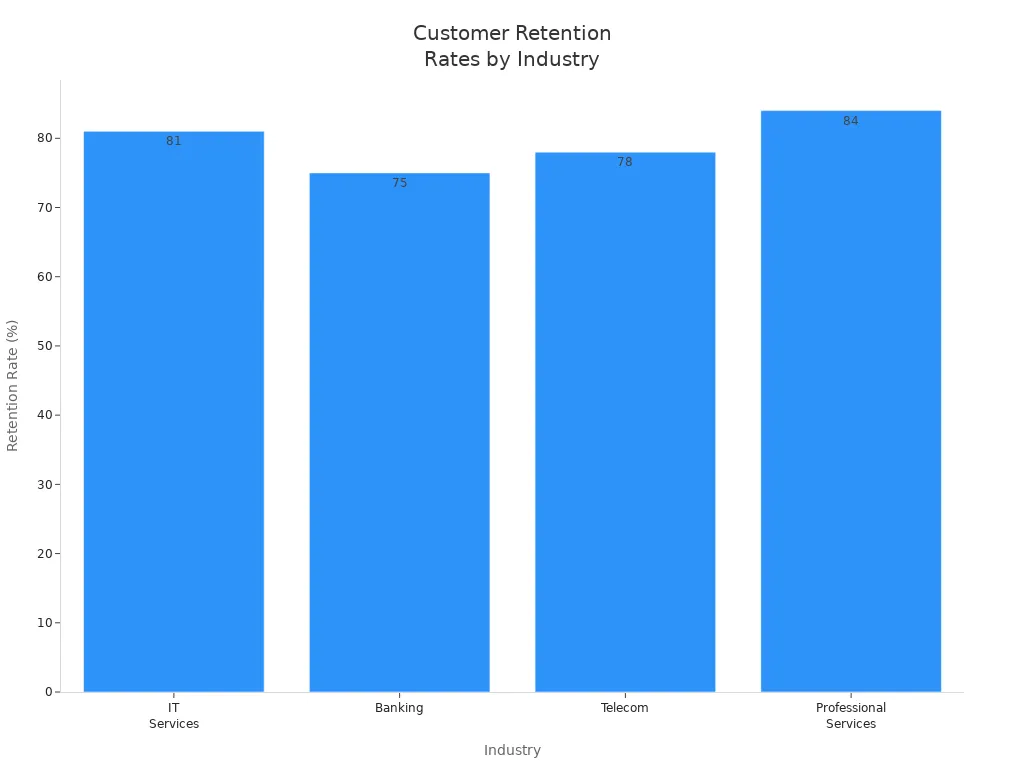
You can also increase customer loyalty by offering personalized experiences, using feedback to improve, and building a community. Sobot helps you with these goals by providing a unified workspace, AI-powered chatbots, and analytics. These tools let you track customer loyalty and adjust your customer retention strategy in real time.
Tip: Regularly collect feedback and act on it. Customers feel valued when you listen and respond to their needs.
Sobot Case Study
OPPO, a global smart device brand, wanted to boost customer retention and loyalty during busy shopping seasons. OPPO used Sobot’s chatbot and ticketing system to handle more customer questions quickly. The chatbot answered common questions, so human agents could focus on complex issues. Sobot also helped OPPO connect all customer channels and business systems. This made it easy for agents to access customer data and give fast, personal service.
After using Sobot, OPPO saw an 83% chatbot resolution rate and a 94% positive feedback rate. Most importantly, OPPO’s repurchase rate increased by 57%. This shows how a strong customer retention strategy and the right tools can increase customer loyalty and keep customers coming back. You can read more about OPPO’s success with Sobot here.
First Response Time
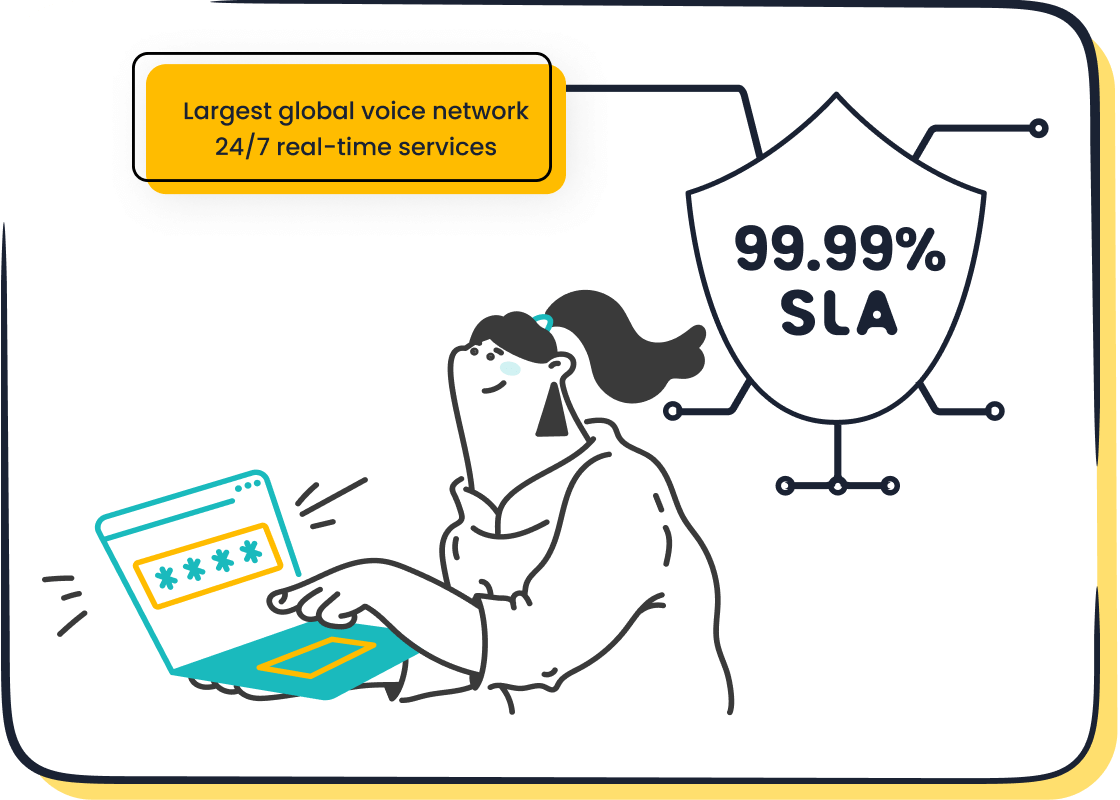
Measurement
First response time (FRT) shows how quickly your team replies to a customer’s first message. Customers expect fast answers, and your FRT can shape their whole experience. You can measure FRT by tracking the time between when a customer contacts you and when your team sends the first reply. Many companies use this metric to see how well they meet customer expectations.
Here is a table that shows industry benchmarks for first response time across different channels:
| Communication Channel | Good Performance Benchmark | Better Performance Benchmark | Industry Reality / Customer Expectation |
|---|---|---|---|
| 12 hours or less | 4 hours or less | Average response time: 12 hours | |
| Social Media | 5 hours or less | 2 hours or less | Expectation: within 1 hour for urgent issues |
| Live Chat | 1 minute or less | 40 seconds or less | AI-enabled companies: as low as 40 seconds |
| Phone Support | N/A | N/A | 80% of calls answered within 20 seconds |
You can see that live chat and phone support set the highest standards for speed. Many customers expect a reply in under a minute on chat and within seconds on the phone. For email, the average response time is much longer, but top companies still aim to improve response time to under four hours.
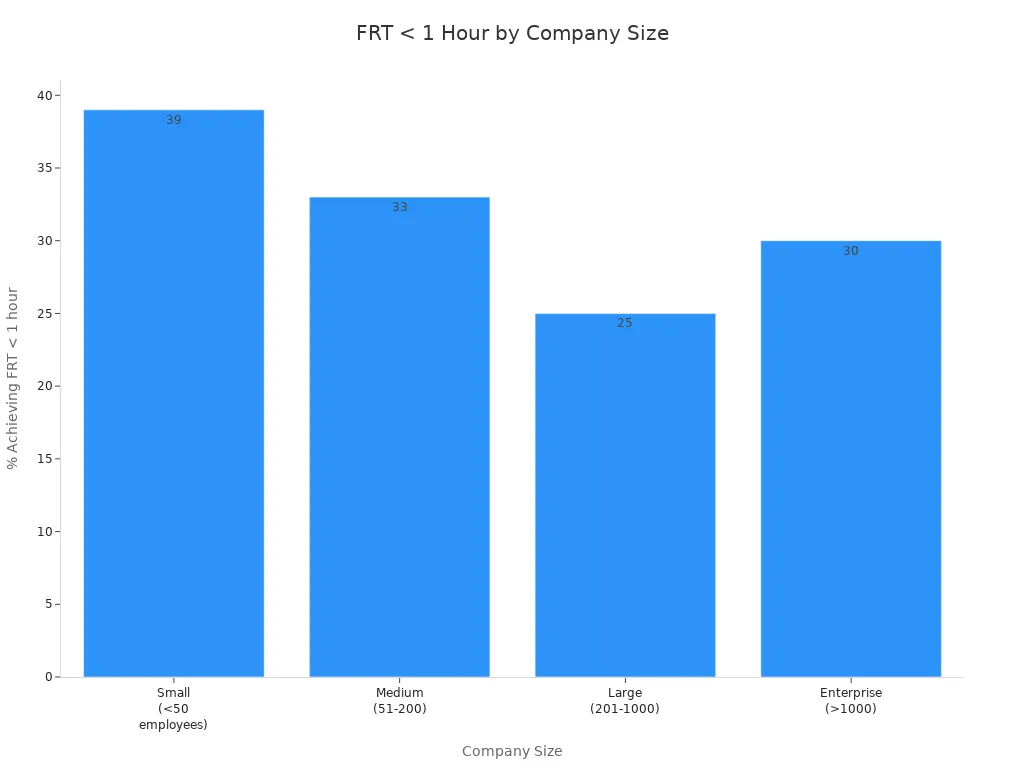
Implementation
You can improve response time by using proven methods. Here are some steps you can take:
- Train your team to focus on first response time for every channel.
- Set clear goals and service level agreements (SLAs) for response times.
- Use AI tools, like Sobot’s omnichannel solution, to route and answer questions faster.
- Build a strong knowledge base so agents can find answers quickly.
- Use templates and shortcuts to reply faster.
- Set up email alerts and autoresponders to let customers know you received their message.
- Track FRT as a key performance indicator and review it often.
Sobot’s unified workspace and AI-powered chatbots help you improve response time by handling simple questions instantly and routing complex issues to the right agent. Automation and smart routing mean your customers get answers faster, which leads to higher satisfaction. When you improve response time, you show customers that you value their time and care about their needs.
Tip: Review your FRT data every week. Small changes can make a big difference in how customers feel about your service.
First Contact Resolution
Benefits
First contact resolution (FCR) means you solve a customer’s problem the first time they reach out. This is one of the most important customer service objectives for any business. When you focus on FCR, you make your customers happier and your team more efficient.
- Top-performing organizations reach FCR rates of 80% or higher. Only about 5% of contact centers achieve this world-class level.
- Most eCommerce businesses have FCR rates between 70% and 79%. If your FCR rate is above 75%, you provide efficient customer support.
- High FCR rates lead to better customer retention and lower costs.
You can see how FCR impacts customer loyalty in the table below:
| Metric/Outcome | Statistic/Evidence | Impact on Customer Loyalty |
|---|---|---|
| Customer Satisfaction | High FCR can improve CSAT by up to 30%. Customers needing multiple contacts are 15% less satisfied. | Higher satisfaction leads to stronger loyalty and repeat business. |
| Customer Retention | Companies with high FCR have 86% retention vs. 56% for low FCR companies. | Higher retention means more loyal customers. |
| Operational Costs | High FCR reduces costs by up to 23%. | Cost savings help you invest more in customer experience. |
| Agent Turnover | High FCR means lower agent churn. | Consistent service quality builds loyalty. |
| Business Examples | Companies like Zappos see measurable gains in loyalty and growth with FCR focus. | Real-world proof of FCR’s value. |
Tip: Make first contact resolution one of your main customer service objectives. You will see higher satisfaction and loyalty.
Voice/Call Center
Your voice or call center plays a big role in achieving first contact resolution. Many challenges can get in the way:
- Agents may struggle to find customer information quickly, which causes delays or callbacks.
- Customers often call about simple issues that could be solved with self-service, but lack of options leads to repeat calls.
- Sometimes agents use quick fixes instead of solving the root problem, which lowers long-term FCR.
- Specialized problems need skilled agents. Without automated routing, these issues take longer to resolve.
- Insufficient training and lack of confidence can stop agents from solving issues in one call.
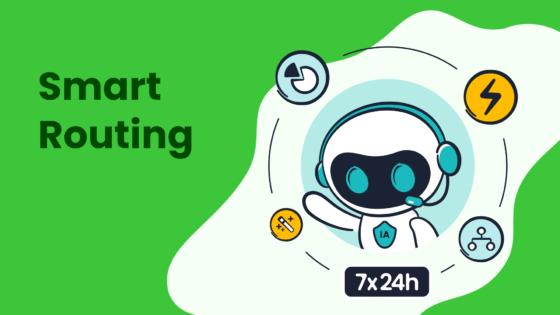
You can overcome these challenges by using tools like Sobot’s Voice/Call Center. Sobot gives your agents a unified workspace, smart call routing, and access to customer data in real time. With features like AI-powered voicebots and automated ticketing, you help your team reach higher FCR rates. This supports your customer service objectives and leads to better business results. Learn more about Sobot’s Voice/Call Center at Sobot Voice.
Note: Providing agents with the right tools and training is key to improving first contact resolution and meeting your customer service objectives.
Customer Service Objectives for Omnichannel
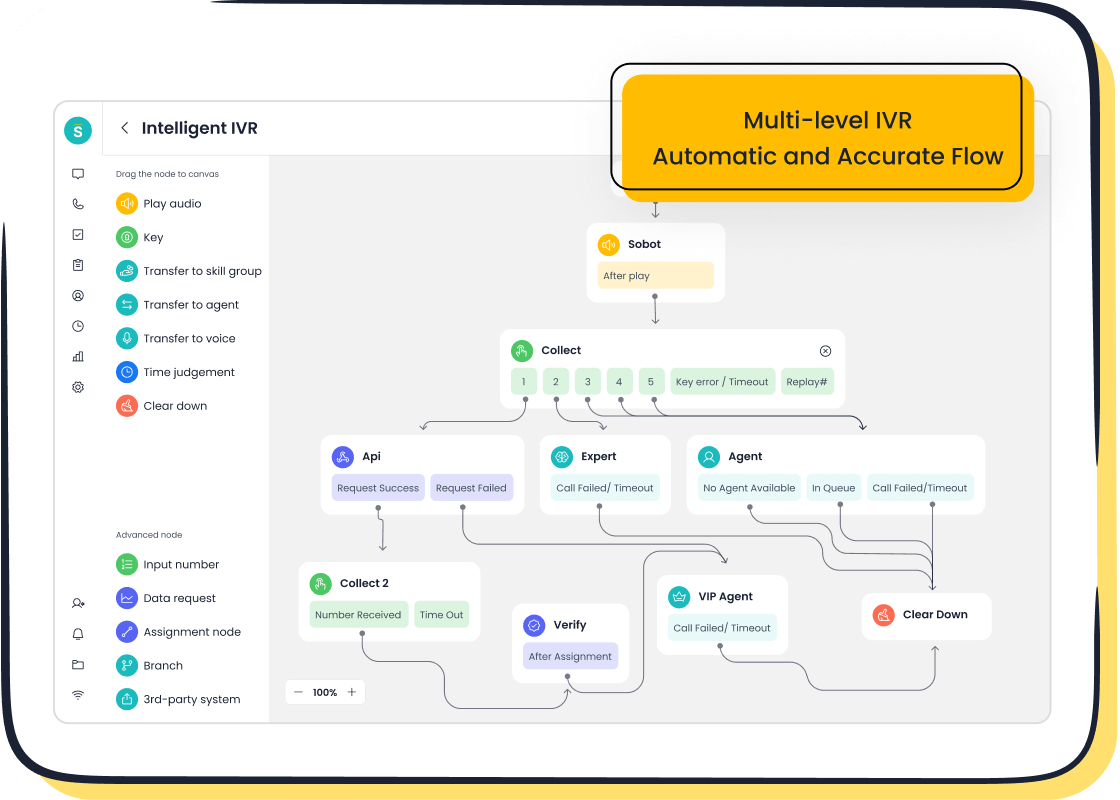
Integration
You want your customer service objectives to cover every channel your customers use. Omnichannel integration means you connect all your support channels—like phone, email, chat, and social media—into one seamless experience. This approach helps you deliver fast, convenient, and consistent service at every touchpoint. Studies show that companies with strong omnichannel strategies keep 89% of their customers, while those with weak strategies keep only 33% (source). You can see how important it is to unify your channels.
Here are the main customer service objectives for omnichannel support:
- Deliver consistent and fast service across all channels.
- Integrate every communication channel into a single, unified system.
- Improve agent productivity with one workspace for all tasks.
- Use data and analytics to make better decisions.
- Personalize each customer interaction by combining all customer data.
- Train your team to use omnichannel tools well.
- Focus on the channels your customers prefer.
- Connect your omnichannel platform with business systems like Salesforce or Shopify.
- Automate simple tasks so agents can solve complex problems.
- Review your channel strategy often to keep up with customer needs.
When you set these customer service objectives, you help your team work smarter and give customers a better experience.
Sobot Omnichannel
Sobot’s Omnichannel Solution brings all your customer interactions together in one place. You can manage voice calls, live chat, email, and social media from a single workspace. This unified view means your agents never miss a message, and customers never have to repeat themselves. Sobot’s platform uses AI to automate routine questions, so your team can focus on more complex support.
You also get real-time analytics to track your customer service objectives and see where you can improve. Sobot helps you personalize service by showing agents the full customer history, no matter which channel the customer used. Businesses using Sobot’s omnichannel tools report higher customer satisfaction and loyalty. For example, seamless integration and consistent support can increase customer satisfaction scores by up to 23 times.
Tip: Start by mapping your customer journey. Identify the channels your customers use most. Train your team on the Sobot platform and set clear customer service objectives for each channel. Review your results often and adjust your strategy as customer needs change.
A strong omnichannel approach helps you build trust, improve engagement, and drive repeat business. Sobot gives you the tools to reach these goals and deliver excellent service at every step.
Reduce Customer Effort
Reducing customer effort is one of the most important customer service objectives you can set. When you make things easy for your customers, you build loyalty and trust. Customers want fast answers and simple solutions. If you remove barriers, you help them stay happy and come back to your business.
Self-Service
Self-service is a powerful way to lower customer effort. Many customers prefer to solve problems on their own. According to a Gartner study, 70% of people use self-service tools to find answers. However, only 9% succeed without help. This means you need to offer clear, easy-to-find resources like FAQs, user guides, and a strong knowledge base. AI-powered chatbots are also important. They give quick, 24/7 support and answer common questions right away. Sobot’s AI chatbot and unified workspace help you provide these self-service options. You can also use customer effort score (CES) surveys to see where customers struggle and improve your service.
Tip: Make your self-service tools easy to use and update them often. This helps customers solve problems faster and reduces the need for live support.
Automation
Automation is another key customer service objective for reducing effort. Automated systems handle simple tasks, route questions, and send updates. This saves time for both your team and your customers. Research shows that low-effort experiences lead to 94% of customers wanting to buy again, while high-effort ones drop this number to just 4%. Companies that focus on low-effort service see a 65-point higher Net Promoter Score (NPS) and cut costs by 37%. Sobot’s automation features, like AI chatbots and workflow automation, help you reach these goals. You can track CES in real time and act quickly when customers face problems. By making things simple, you meet your customer service objectives and build lasting loyalty.
- Customers with low-effort experiences are more loyal.
- Low-effort service reduces repeat calls, escalations, and costs.
- Automation helps your team focus on complex issues, not routine tasks.
Reducing customer effort should always be at the top of your customer service objectives. This approach leads to happier customers, lower costs, and a stronger business.
Customer Service Experience
Personalization
You can improve customer experience by personalizing every interaction. Personalization means you use customer data to make each service unique. When you personalize, you show customers that you understand their needs and preferences. This approach helps you build trust and loyalty.
Many factors influence customer service experience in digital channels:
- Accessibility: Make it easy for customers to reach you through different channels.
- Empathy: Show that you care about their feelings and concerns.
- Communication: Use clear and simple language.
- Response time: Reply quickly to questions.
- Convenience: Offer easy and flexible ways to interact.
- Variety of choices: Give customers options that fit their needs.
Personalization has a big impact on customer satisfaction. The table below shows how it affects important business metrics:
| Metric | What It Measures | Why It Matters |
|---|---|---|
| Retention Rate | Customers who stay after experiencing personalization | Reflects customer loyalty and satisfaction |
| Customer Lifetime Value (CLV) | Total customer spend over time | Indicates long-term revenue and impact of personalization |
| Net Promoter Score (NPS) | Customer satisfaction and loyalty | Predicts growth and measures success of personalization efforts |
When you use tools like Sobot’s omnichannel platform, you can personalize every interaction across chat, voice, and social media. Sobot helps you enhance customer experience by showing agents the full customer history and preferences. This makes it easier to deliver proactive service and keep customers happy.
Tip: 88% of shoppers say they continue their journey if the experience is tailored to them. Personalization is key to customer satisfaction and loyalty.
AI and Human Touch
AI and human agents work together to create a strong customer service experience. AI-powered chatbots and voice assistants can answer questions instantly and manage high volumes of requests. This means your team can focus on more complex or sensitive issues.
Here are some ways AI and human touch combine to improve outcomes:
- AI handles routine tasks, freeing agents to build real relationships.
- Human agents manage sensitive situations and provide empathy.
- AI-driven support gives instant answers and helps during busy times.
- A thoughtful balance between AI and people prevents impersonal service.
- Companies use AI to deliver proactive service and spot issues before they grow.
Sobot’s AI chatbots and unified workspace let you scale support without losing the human touch. You can use AI to gather data, automate simple tasks, and route complex cases to the right person. This approach helps you enhance customer experience, increase customer satisfaction, and build long-term loyalty.
Note: Customers want fast answers, but they also value empathy and understanding. Combining AI with human support helps you meet both needs and improve customer service experience.
Net Promoter Score
Tracking
You can use Net Promoter Score (NPS) to measure how likely your customers are to recommend your business. NPS is a simple but powerful way to track customer satisfaction and loyalty. Many companies in the technology sector use NPS to see how well their customer service teams perform. The average NPS for SaaS companies is about +36, but some top companies score much higher. Here is a table showing NPS scores for well-known technology brands:
| Company | NPS Score |
|---|---|
| Nutanix | 92 |
| NetMotion | 91 |
| Cohesity | 90 |
| Druva | 89 |
| AppDynamics | 87 |
| Qumulo | 85 |
| SignNow | 73 |
| Veeam | 73 |
| Zoom | 72 |
| Snowflake | 71 |
| Square | 70 |
| Cleo | 70 |
| Netflix | 67 |
| DocuSign | 65 |
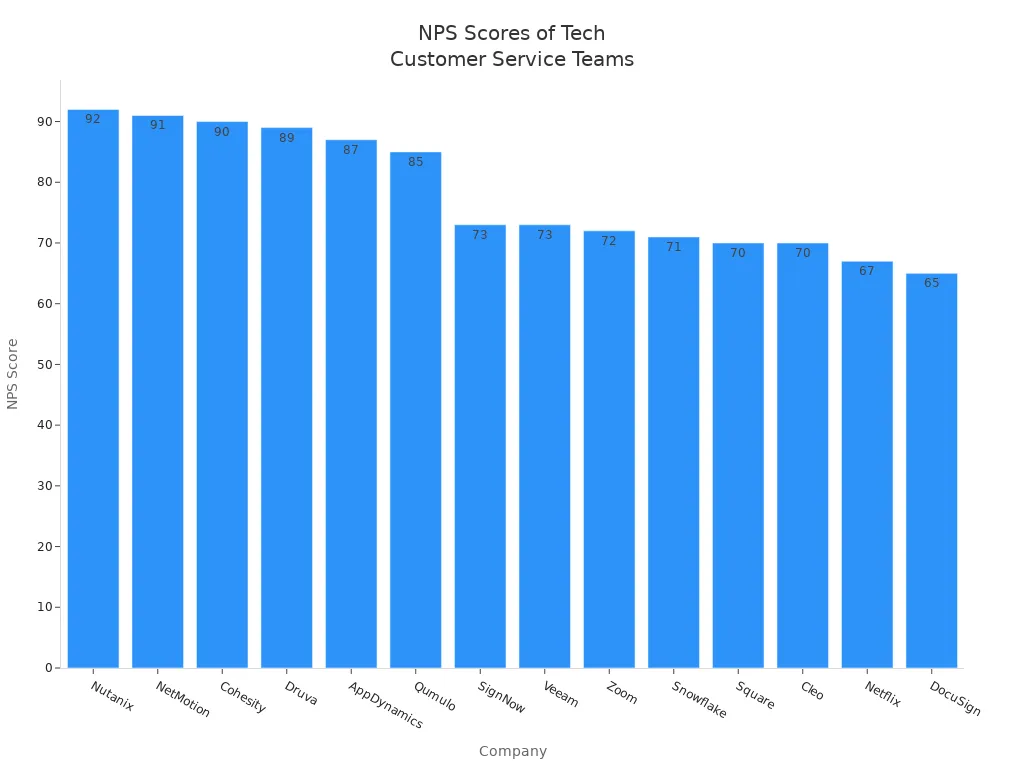
To track NPS in real time, you can follow these steps:
- Send surveys right after important customer interactions or at regular times.
- Use survey tools or customer service platforms with built-in NPS features.
- Add follow-up questions to learn why customers gave certain scores.
- Segment your audience to see how different groups feel.
- Review results quickly and share insights with your team.
- Respond to feedback by thanking happy customers and helping those who are not satisfied.
Tip: Sobot’s omnichannel platform lets you send NPS surveys across chat, email, and voice. You can collect feedback and analyze results in one place, making it easy to track customer satisfaction.
Improvement
You can improve your NPS by focusing on what matters most to your customers. Start by listening to feedback and acting on it. When you see patterns in the responses, you can fix common problems and make your service better. For example, if customers mention slow response times, you can use Sobot’s automation tools to speed up replies. If they want more personal service, you can use Sobot’s unified workspace to give agents a full view of each customer’s history.
Here are some ways to raise your NPS:
- Train your team to solve problems on the first contact.
- Personalize every interaction using customer data.
- Use automation to handle simple requests and free up agents for complex issues.
- Close the feedback loop by telling customers what changes you made based on their input.
When you make these improvements, you boost customer satisfaction and loyalty. High NPS scores show that your customers trust you and want to recommend your business to others. This leads to growth and long-term success.
Employee Empowerment
Empowering your employees is a key part of building a customer-centric culture. When you give your team the right tools and support, they feel confident to solve problems and help customers. This leads to better service and happier customers.
| Aspect | Evidence Summary |
|---|---|
| Link between EX and CX | Empowered employees who feel supported and heard are more motivated to take ownership, leading to better customer service and improved business outcomes. |
| Ritz-Carlton Case Study | Employees have discretionary budgets ($2,000) to resolve customer issues immediately, resulting in memorable customer experiences. |
| Benefits of Empowerment | Empowered employees handle inquiries confidently, resolve issues faster, foster customer loyalty, and reduce turnover. |
| Organizational Impact | Fostering a culture of listening and responsiveness enhances both employee and customer experiences, improving satisfaction and loyalty. |
Denise Lee Yohn, an expert on brand culture, says that employee experience drives customer experience. When you empower your team, you help them create better interactions with customers. Research also shows that empowered employees perform better and bring new ideas to their work.
Training
You need to invest in training to promote a customer-centric culture. Ongoing training keeps your team updated on products, services, and policies. This helps them solve problems on their own and serve customers better.
- Offer professional development, such as paid courses and workshops.
- Use resources like Udemy for affordable customer service courses.
- Try Alison for free training on practical customer service skills.
- Use LiveChat’s free course to learn about customer retention and complaint handling.
- Give your team the right tools, such as Sobot’s unified workspace, phone systems, and help desk software.
- Create clear processes and update them often so employees can work independently.
Sobot supports your training goals by providing easy-to-use platforms and resources. You can train your team to use AI chatbots, ticketing systems, and omnichannel tools. This helps everyone deliver consistent and high-quality service.
Tip: Regular training builds confidence and helps your team handle any customer situation.
Recognition
Recognition motivates your team and helps you build a strong customer-centric culture. When you celebrate achievements, employees feel valued and want to do their best. You can use simple ways to recognize good work:
- Give shout-outs during team meetings.
- Offer rewards for excellent customer feedback.
- Share success stories in company newsletters.
- Set up a recognition board for top performers.
You can also use Sobot’s analytics to track performance and highlight employees who meet customer service goals. When you recognize your team, you show that you care about their efforts. This creates a positive workplace and encourages everyone to focus on customer needs.
Note: Recognition is not just about rewards. It is about showing respect and appreciation for your team’s hard work. This helps you keep your best employees and deliver great service every day.
Customer Feedback
Collection
You need to collect customer feedback to understand what your customers think and feel. This feedback helps you improve your service and build customer loyalty. You can use many methods to gather feedback at different points in the customer journey. Here are some of the most common ways:
- Surveys, such as Customer Satisfaction (CSAT), Net Promoter Score (NPS), and Customer Effort Score (CES)
- One-on-one interviews for deeper insights
- Focus groups to discuss experiences and opinions
- Usability tests to watch how customers use your product
- Feedback boxes, suggestion forms, and contact forms on your website
- Social media listening to track what customers say online
- Analyzing customer support tickets to spot common issues
- Review platforms where customers share public feedback
Mixing these methods gives you both numbers and stories. You get a full picture of what works and what needs to change. Companies like Sobot make it easy to collect feedback across channels. Sobot’s omnichannel platform lets you gather feedback from chat, email, voice, and social media in one place. This helps you respond quickly and keep your customers happy.
Tip: Always let your customers know how you use their feedback. This builds trust and encourages more people to share their thoughts.
Action
Collecting feedback is only the first step. You need to act on what you learn to increase customer loyalty and improve your service. Start by reviewing feedback often. Look for patterns in what customers say. Fix problems that come up again and again. Share feedback with your team so everyone knows what matters most.
You can leverage customer feedback to make real changes. For example, if many customers ask for faster support, you can use Sobot’s automation tools to speed up response times. If customers want more self-service options, you can add AI chatbots to your website. When you show customers that you listen and act, you build loyalty and trust.
Many companies see higher customer retention and loyalty when they close the feedback loop. Thank customers for their input and tell them about the changes you made. This simple step can turn feedback into a powerful tool for growth.
Reduce Wait Times
Process
You want to reduce wait times because customers expect fast answers. Long wait times can frustrate customers and make them leave. Studies show that 60% of customers feel that waiting for service is the most annoying part of getting help (source). You can improve customer satisfaction by making your process faster.
Start by mapping your customer journey. Find out where customers wait the longest. Use data to spot bottlenecks. For example, you might see long queues during peak hours or slow responses on certain channels. Set clear goals to reduce wait times at each step.
Here are some ways to reduce wait times:
- Train your team to handle requests quickly and accurately.
- Use automation to answer simple questions right away.
- Offer self-service options like FAQs and chatbots.
- Monitor real-time data to adjust staffing during busy times.
- Set up smart routing so customers reach the right agent faster.
Tip: Track your average wait time and share results with your team. Celebrate improvements to keep everyone motivated.
Reducing wait times helps you build trust and loyalty. Customers who get quick help are more likely to return and recommend your business.
Sobot Voice/Call Center
Sobot Voice/Call Center gives you powerful tools to reduce wait times. You can use intelligent IVR to greet customers and route calls to the right agent. This system helps you avoid long queues and missed calls. Sobot’s unified workspace lets agents see all customer information in one place, so they solve problems faster.
The platform supports global telephony, so you can serve customers anywhere. Real-time monitoring and analytics show you where wait times increase. You can adjust your process right away. Sobot’s AI-powered voicebot answers common questions 24/7, reducing the need for customers to wait for a live agent.
Here is a quick look at how Sobot helps you reduce wait times:
| Feature | How It Reduces Wait Times |
|---|---|
| Intelligent IVR | Routes calls quickly |
| Unified Workspace | Gives agents instant access to info |
| AI Voicebot | Handles simple requests instantly |
| Real-Time Analytics | Spots and fixes bottlenecks fast |
You can learn more about Sobot Voice/Call Center at Sobot Voice. By using these tools, you make sure customers spend less time waiting and more time getting the help they need.
Cost Efficiency
Automation
You can save money and time by using automation in your customer service. Automation helps you handle simple tasks without human help. For example, chatbots answer common questions right away. This means your team can focus on harder problems. Research shows that companies using automation in customer service can cut costs by up to 30% (source). You also see fewer mistakes because machines follow rules every time.
Sobot gives you tools like AI-powered chatbots, automated ticketing, and workflow automation. These tools work across channels like chat, email, and voice. You can set up rules so that simple requests go to a bot, while complex ones go to an agent. This setup helps you serve more customers without hiring more staff. You also get faster response times, which makes customers happier.
Tip: Start by automating the most common questions. Use Sobot’s analytics to see which tasks take the most time. Then, set up automation to handle those tasks.
ROI
You want to see a good return on investment (ROI) when you spend money on customer service tools. ROI measures how much value you get for every dollar you spend. Automation helps you reach this goal. When you use Sobot’s solutions, you reduce labor costs and improve service quality at the same time.
Here is a simple table to show how automation impacts ROI:
| Benefit | Impact on ROI |
|---|---|
| Lower labor costs | Spend less on staffing |
| Faster response times | Keep more customers |
| Fewer errors | Reduce costly mistakes |
| 24/7 support | Serve customers anytime |
You can enhance efficiency by using Sobot’s unified workspace and automation features. These tools let you handle more requests with the same team. Many businesses see a payback period of less than one year after switching to automated customer service. You also gain better insights into your operations, which helps you make smarter decisions.
Note: Track your costs and savings every month. Use Sobot’s reporting tools to measure your ROI and find new ways to save.
Service Quality Consistency
Standards
You need clear standards to keep your service quality consistent. Setting standards is one of the most important customer service objectives. Standards tell your team what good service looks like. They help you deliver the same high-quality experience every time a customer reaches out.
You can set standards for many parts of your service. For example, you might set a goal for first response time or require agents to greet customers in a friendly way. Some companies use scripts or checklists to make sure every agent follows the same steps. You can also set standards for how quickly you solve problems or how you handle complaints.
Here are some examples of service quality standards:
- Respond to all customer inquiries within one hour.
- Resolve 80% of issues on the first contact.
- Use positive language in every interaction.
- Collect feedback after each support session.
Sobot helps you set and track these customer service objectives. With Sobot’s unified workspace, you can create templates and workflows that guide your team. This makes it easier to meet your standards every day.
Tip: Review your standards often. Update them as your business grows or as customer needs change.
Monitoring
You must monitor your service to make sure you meet your customer service objectives. Monitoring helps you spot problems early and keep your quality high. You can use tools like real-time dashboards, call recordings, and customer surveys to track performance.
Many companies use key performance indicators (KPIs) to measure service quality. Here is a table with common KPIs for customer service objectives:
| KPI | What It Measures |
|---|---|
| First Response Time | Speed of first reply |
| First Contact Resolution | Issues solved on first try |
| Customer Satisfaction (CSAT) | How happy customers feel |
| Net Promoter Score (NPS) | Likelihood to recommend |
Sobot gives you real-time analytics and reporting tools. You can see how your team performs against your customer service objectives. Sobot’s monitoring features let you review calls, track tickets, and analyze feedback. This helps you keep your service quality consistent and make improvements where needed.
Note: Consistent monitoring supports your customer service objectives and helps you deliver excellent service every time.
Best Practices for Customer Service Objectives
SMART Goals
You can set customer service goals that truly make a difference by using the SMART framework. SMART stands for Specific, Measurable, Attainable, Relevant, and Timely. When you follow this method, you create customer service objectives that are clear and easy to track. For example, you might set a goal to reduce first response time from 4.5 minutes to 3 minutes within three months. This goal is specific and measurable. You also want to make sure your goals are realistic. Aiming for 100% satisfaction is not always possible, but improving your CSAT score by 10% is both challenging and achievable.
Sam Chandler, a director at a leading customer service company, suggests that you start by understanding what your customers need. Set a baseline metric before deciding how much you want to improve. Involve your team in setting customer service goals. Break big goals into smaller steps so everyone stays motivated. Use real-time metrics, like average resolution time or first-call resolution rate, to measure your progress. Sobot’s analytics dashboard helps you track these metrics and see where you stand at any moment.
Tip: Use technology, such as Sobot’s AI chatbots and unified workspace, to support your customer service objectives and make tracking easier.
Continuous Improvement
You should always look for ways to drive continuous improvement in your customer service goals. This means you do not just set goals and forget them. Instead, you review your progress often and adjust your objectives as needed. Collect feedback from your team and customers to see what works and what needs to change. Sobot’s reporting tools let you monitor trends, spot issues, and find new opportunities for growth.
Break large goals into smaller milestones. Celebrate each win to keep your team motivated. When you use data and feedback, you make smarter decisions and keep improving your customer service objectives. Continuous improvement helps you stay ahead of customer expectations and deliver a better customer experience every day.
Setting clear customer service objectives helps you measure progress and reach your customer service goals. Companies that focus on customer loyalty see up to 57% higher repurchase rates. Sobot’s all-in-one platform gives you tools to track, analyze, and improve every step. Choose the customer service goals that fit your business. Create a checklist to guide your team. Start your journey with Sobot and see real results in customer service.
Ready to improve? Explore Sobot’s solutions for better customer service today.
FAQ
What are customer service objectives?
Customer service objectives are clear goals you set to improve how you help customers. These objectives guide your team and help you measure success. For example, you might aim to reduce wait times or increase customer satisfaction scores.
Why should you track customer service objectives?
Tracking customer service objectives helps you see what works and what needs improvement. You can use data to make better decisions. Sobot’s analytics dashboard lets you monitor key metrics like first response time and customer satisfaction in real time.
How can Sobot help you achieve customer service objectives?
Sobot offers tools like AI chatbots, unified workspaces, and omnichannel support. These features help you reach customer service objectives such as faster response times, higher satisfaction, and better retention. Many businesses report improved efficiency after using Sobot.
What is an example of a measurable customer service objective?
You might set a goal to resolve 80% of customer issues on the first contact. This objective is specific and measurable. Sobot’s reporting tools let you track progress and adjust your strategy as needed.
How often should you review your customer service objectives?
You should review your customer service objectives at least every quarter. Regular reviews help you stay on track and adapt to changing customer needs. Sobot’s real-time analytics make it easy to spot trends and update your goals.
Tip: Set SMART customer service objectives to keep your team focused and motivated.